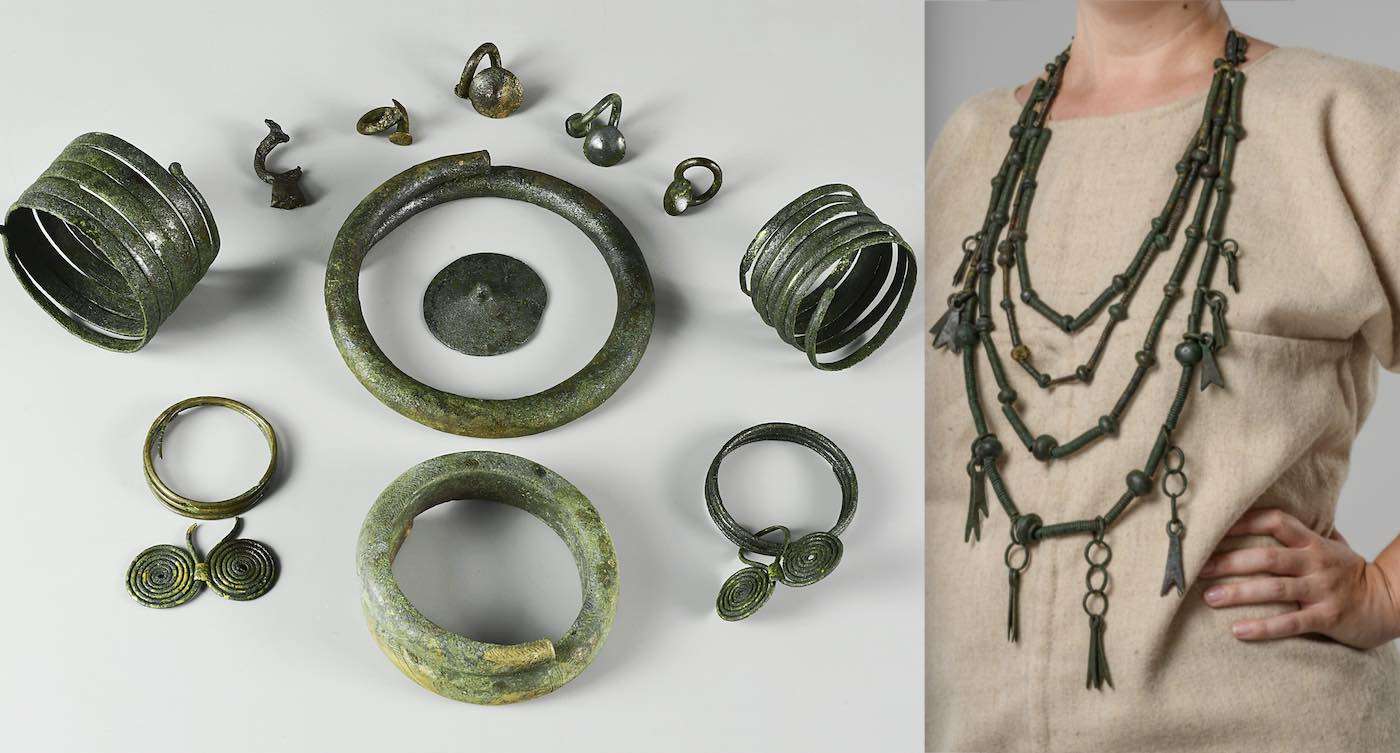Special Police Unit Tracks Down $27 Million in Stolen Cars Including Crates Full of Snagged Luxury Vehicles
Since the start of 2021, the team has recovered or identified more than 1,800 vehicles worth over $60 million

A hoard of bronze jewelry was found along with the remains of dozens of humans in a dried-up lakebed in Poland.
The amazing find bears witness to rapid advancement in the understanding of the Chełmno group's ceremonial behavior, and shows how some people had jewelry interred with them—after they themselves were buried.
The Chełmno were a group of ancient Poles from the Late Bronze/Early Iron Age culture known as Lusatia. The Lusatians were related to the Hallstatt culture, which was probably Celtic in language and culture, and aspects of their jewelry-making and water-related burials certainly support the idea the Chełmno were Celtic in some way, though it was once aptly said that a Celt is anyone who believes themselves to be a Celt.
The hoard was discovered at Papowo Biskupie, a long dried-up lakebed. Metal detectives found 550 artifacts and the remains of several humans, making it "one of the most eloquent testimonies of ritual activity from the Lusatian period in Poland," according to a study published this week in the journal Antiquity.
At least 33 human bodies of various ages were identified, and radiocarbon dating placed their activity at Papowo Biskupie to between 1,000 and 750 BCE. The bronze ornaments included arm rings, necklaces, and trinkets. A glass bead from the Mediterranean region was also uncovered which indicates they may have been engaged in wider European trade.
All the pieces were buried in the lake after the bodies, which the archaeologists say could demonstrate a shift in cultural activities in lockstep with the rise in metal use.

The Chełmno were not, throughout most of their existence, prolific workers or consumers of metal objects. Other Lusatians were, but the Chełmno may only have aligned with these commercial, and perhaps ritual practices, later on.
Bog burials, including events of human sacrifice, had been practiced by other Celts from the period in other parts of Europe, but not in the region the Chełmno were active.
"Papowo Biskupie may thus reflect a shift from human sacrifice to metal offerings in the local wetland landscape during the cultural conversion of the Lusatian power elites to Hallstatt culture," the authors wrote as part of their study's conclusion.
"The consequences of this development are seen in the contents of the metal deposits at the site—the female ornaments accompanied by horse-related accessories belong to a wider pattern of Hallstatt finds which are often taken as evidence that women were an important medium in votive depositions."
SHARE This Fascinating Insight Into Ancient Polish Culture…
Be the first to comment